There are certain situations when you would want to find the process start and end time in Windows 11/10. For example, as you try to troubleshoot an application, or if there are too many processes running in the background. You may also want to know the start time and time of the Windows process if you want to monitor the timings of a certain process started by someone else.
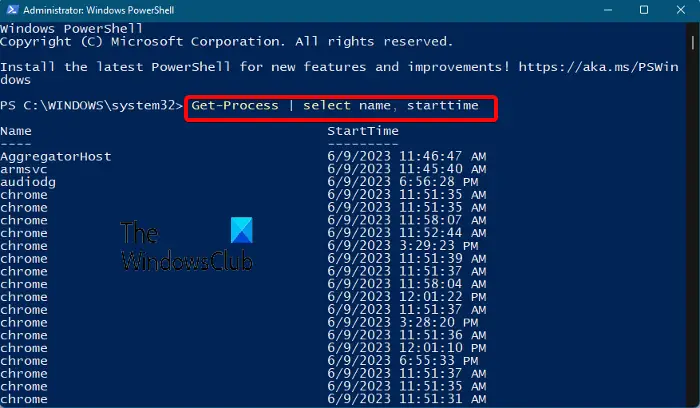
While there are a couple of ways to find out the Windows Process start time, there are not many ways to know the end time. Let’s first understand what is the process start and end time in Windows.
What are the Windows Process Start and End times?
Some Windows processes usually start along with a few services as soon as you boot up your PC, or when you launch a program. This is the actual start time of the process. Also, you may want to note the process end time for applications that terminate themselves automatically after they have been idle for some time.
However, considering all these occur in a matter of seconds in the background, it is impossible to note the start time during this period. But for some reason, we may need the data later.
How to Find the Process Start and End Time in Windows 11/10?
While you are working on the Windows machine, you may want to know for how long the process has been running. For this, you would need to find out two things; the process starts time and the end time.
- Find out the Windows process start time using PowerShell
- Find out the Windows process start time using Process Explorer
- Find out the Windows process end time using system tools
- Find Process Start and End Times using free tool
1] Find out the Windows process Start time using PowerShell
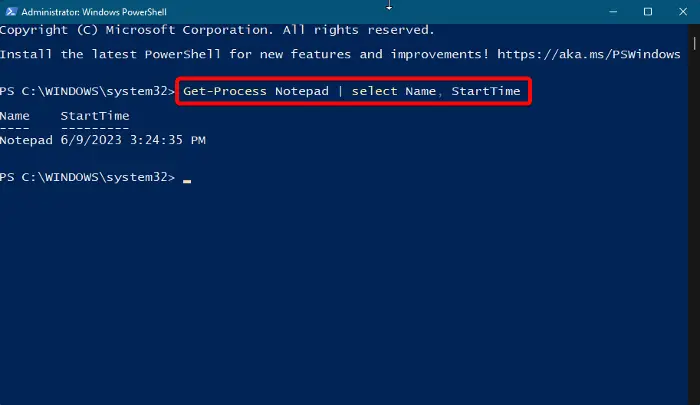
One of the quickest ways to find out the Windows process start time is by using the PowerShell utility in admin mode. There are two PowerShell commands, one of which helps you find out the start time for all processes, and the other helps you to find out the start time of a specific process.
To find out the start time for all processes, open the elevated Windows PowerShell prompt, run the below command and hit Enter:
Get-Process | select name, starttime
Windows PowerShell will now generate and display the list of process start times. You can then look for the process you want the start time for.
Alternatively, to find the start time for a specific process, run the below command in the elevated PowerShell, and hit Enter:
Get-Process ProcessName | select Name, StartTime
So, for example, if you want to find out the process start time for Notepad, simply replace ProcessName syntax with Notepad:
Get-Process Notepad | select Name, StartTime
PowerShell will now display the start time for Notepad and you can note it down for your reference.
Read: Process Manager lets you measure computer reboot, logon times and more
2] Find out the Windows process Start time using Process Explorer
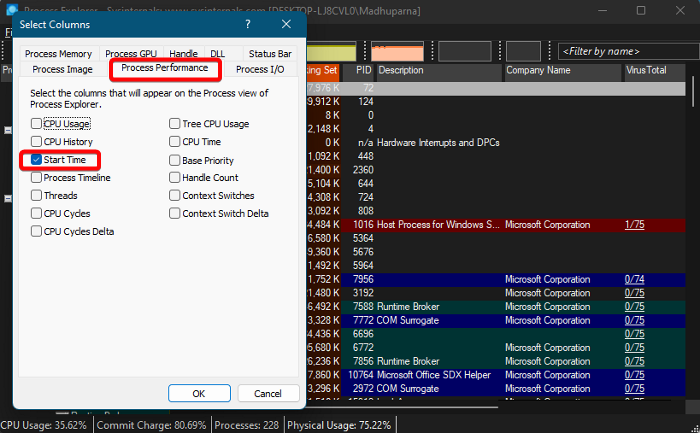
Another way to find out the process start time for Windows 11/10 is by using the Microsoft Sysinternals Process Explorer Tool. It’s a free alternative to Task Manager with advanced features that Task Manager does not offer. It can do all of that Task Manager does, and also doubles up as a system monitor, and as an anti-malware program. As a plus, it can monitor the process start time. Here’s how:
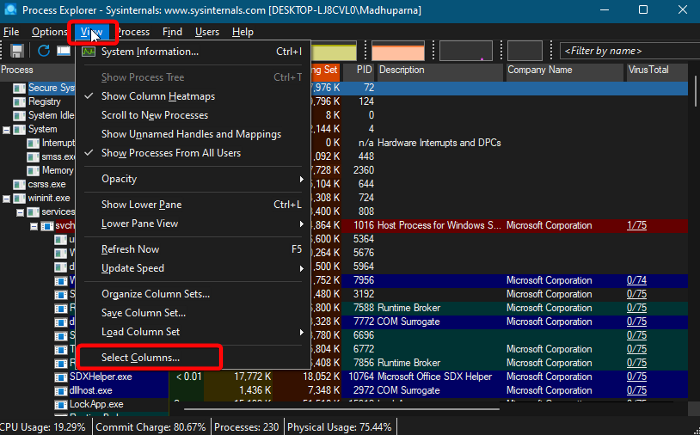
- Download the Process Explorer tool from Microsoft’s official download page.
- Unzip the folder and extract the file to your preferred location.
- Double-click on the file (procexp) and open it.
- Next, click on View at the top and click on Select Columns.
- Now, in the Select Columns dialog, go to the Process Performance tab and select Start Time. Press OK.
- You should now see a column called Start Time, in the Process Explorer tool.
Read: Task Manager is not responding or opening
3] Find out the Windows process End time using system tools
Finding the end time of a Windows process could be rather tricky because there’s no other option available for the same.
- You can use the Microsoft Process Class to manually start and stop the local system process, and that way, you can monitor the end time.
- You can also use the Microsoft Stopwatch Class to accurately measure the elapsed time and accordingly log the end time.
Related: How to find out Windows Downtime, Uptime and Last Shutdown Time
4] Find Process Start and End Times using free tool
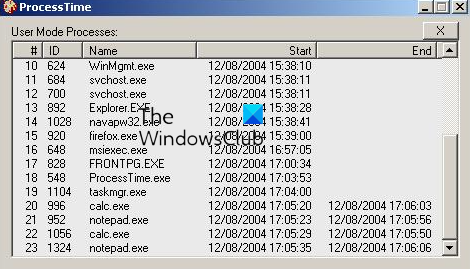
If you are not comfortable with any of these, you can use a third-party tool like the ProcessTime tool by the Code Project to find and log the start and end times of the Windows 11/10 processes. You may also refer to its step-by-step tutorial that guides you on how to do it using the WMI commands.
Read: How to find all running processes using WMIC in Windows
How do I see running processes in Windows 11?
While the Windows Task Manager allows you to see the running processes in Windows 11, you can also use the Command Prompt for the same. Run Command Prompt as an administrator > type tasklist > Enter. It will list all the running processes in Windows 11. Alternatively, you can also run a command called get-process and hit Enter in the elevated Windows PowerShell to check the running processes.
How do I find my PID in Windows 11?
PID or Process ID is a unique decimal number assigned to each process that runs on Windows. The PID can be used for different purposes; for example, it can be useful to fix issues by identifying the process with its id as you attach a debugger to it. Having said that, you can find the PID in Windows 11 using Task Manager, Command Prompt, Resource Monitor, and PowerShell.
Leave a Reply